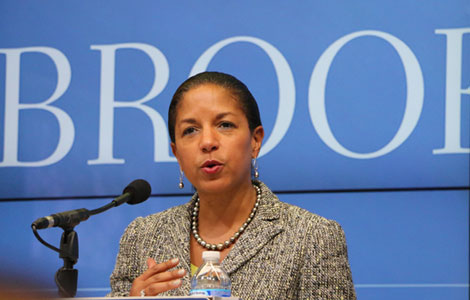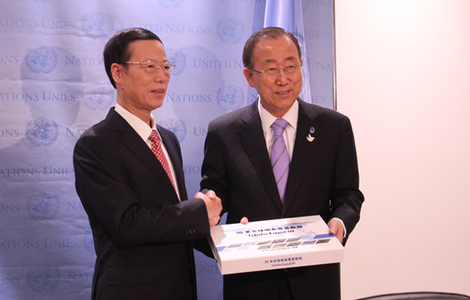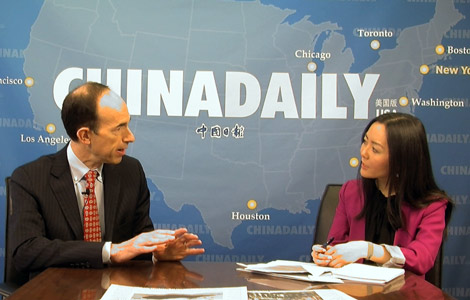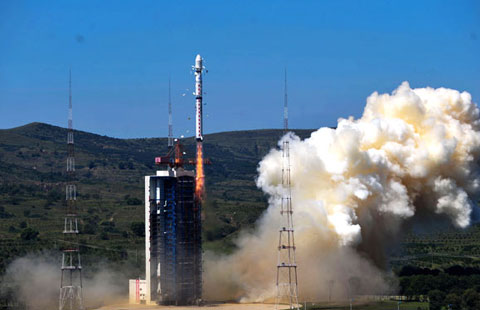China's energy demand charted
Updated: 2014-09-23 12:09
By Jack Freifelder in New York(China Daily USA)
|
||||||||
For the next two decades China will continue to be one of the world's largest consumers of oil and other liquid fuels, according to the latest report by the United States Energy Information Administration (EIA).
The report - International Energy Outlook 2014: World Petroleum and Other Liquid Fuels - was presented and discussed on Monday by Adam Sieminski, an EIA administrator, as part of an event hosted by Columbia University's School of International and Public Affairs (SIPA) Center on Global Energy Policy.
Sieminski and Jason Bordoff, founding director of the center, discussed the significance of the report's findings and how it has affected the EIA's long-term assessment of the international energy market.
"The potential for growth in demand for liquid fuels is focused on the emerging economies of China, India and the Middle East," the report said.
The EIA forecasts that world petroleum and other liquid-fuel use will increase 38 percent by 2040, and countries in Asia and the Middle East, including China and India, will account for about 85 percent of the increase.
The report also shows that China's use of liquid fuels is expected to surpass US totals by 2035.
Based on data from the report, liquid-fuel sources, which include natural gas plant liquids (NGPL), gas-to-liquid (GTL) and coal-to-liquid (CTL) supplies, could represent nearly 17 percent of global liquid-fuel production by 2040.
One question posed to Sieminski centered on the possibility that China could establish its own crude oil benchmark.
"When you're involved in trading activities you'd like to have it in a currency that you have faith in," Sieminski said. "The US dollar has often, but not always, been viewed as a fairly stable trading currency, so it's not a surprise that Brent and WTI (West Texas Intermediate) - which trade in dollars - have become a benchmark."
Sieminski said he sees four key aspects as integral parts of setting up a global benchmark: a need for large volumes of oil, a fairly stable trading currency, a sufficient legal system to handle any disputes, and access to appropriate trading capital.
"A number of countries have tried to create benchmarks and they've failed for one reason to another, but currency in China has actually shown itself to be pretty stable and the access to capital is pretty good," Sieminski said following his presentation on Monday. "I don't really know how the legal representation would work, but it's certainly plausible to me that something could be worked out there."
"If you're going to have another benchmark somewhere, it really helps to have all four of these things working," he said.
Sieminski, also said China is one of the countries that his organization wants to "work with more closely" on a number of issues going forward, including the process by which officials in the world's second largest economy gather and collect energy statistics.
Columbia's SIPA Center on Global Energy Policy, launched in April 2013, is one of many research arms of the university that provides independent, data-driven analysis to help policymakers and other interested parties delve into global energy markets.
jackfreifelder@chinadailyusa.com
(China Daily USA 09/23/2014 page2)
Most Viewed
Editor's Picks

|

|

|

|

|

|
Today's Top News
Xi reassures Hong Kong on stability issue
China's energy demand charted
CA, Guangdong boost ties
Shenzhen wins green city award
UN chief calls for intensified efforts on sustainable growth
Xi stresses military headquarters' loyalty
Guideline helps battle against terrorism
Alibaba's IPO is only just the beginning: Ma
US Weekly

|

|
















